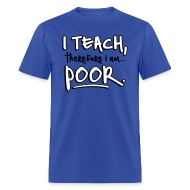What floored me was that she gave it a 1-star and said the book was total crap because of one story in the book where I taught the kids estimation.
Here is an excerpt from her review:
***********
But in the middle of the story, I began to suspect his identity, and doubt his credibility as a teacher. He wrote of teaching his third graders estimation ... he claimed to have a strong background in his subjects, having gone to college to complete teacher licensure classes ... yet there he was, using a metaphor of "punching" a number up (which no third grade teacher would willingly use, being wary of accusations of encouraging physical harassment.)
To seal his fate with me, he then proceeded to write of the difference, within his metaphor, or punching a number up vs letting it fall down. He was teaching them to round up or round down. THERE IS NO SUCH THING AS ROUNDING DOWN!A teacher would know that. Teachers spend years clarifying that for students and their parents.
*************
Forget the fact that the punch it up method is something I learned FROM a teacher and have passed on TO many other teachers, all of whom use it and love it. What concerned me was that I am a teacher, and I did NOT in fact know that THERE IS NO SUCH THING AS ROUNDING DOWN!
I don't normally respond to bad reviews, but I had to ask for clarification. 34 does not round down to 30? 125 does not round down to 100?
In the meantime, I posted about it on Facebook and got a ton of responses. One of my friends posted a link: http://www.jimloy.com/
On this page, Jim Loy seems to agree with the Amazon reviewer:
"Rounding down" is ambiguous, and is not an expression used by mathematicians, nor is it found in arithmetic text books in grade school. It shows a small misunderstanding of the term "rounding."
He then goes on to talk about rounding and estimation, but every one of his examples uses integers and decimals. Not exactly what we're talking about in 3rd grade.
I figured that this was probably a matter of semantics, and that the reviewer somehow thought that I was teaching the kids to drop 34 to 20 -- actually subtracting 1 from the tens place. Sure enough, she did reply to my reply today, and confirmed that this was her understanding from what she had read. She went on to tell me that visual number lines and manipulatives are a must and gave a mini-lesson on how she would teach estimation.
I'm not exactly sure why she would think that a short, funny anecdote in a humor novel would go into detail about every single step used in the classroom (obviously, she thought punch it up/drop it down was my single verbal instruction to the kids), or even why this one detail would totally derail the book, or heck what the phrase, "I began to suspect his identity" even MEANS!
I'm pretty sure now, though, that I'm not leading America's future generation astray. I had my doubts last night, wondering if I was totally missing something, teaching the kids the mathematical equivalent of "E before I, except after C."
And maybe the phrase "rounding down" really ISN'T found in any grade school math books. I doubt phrases like, "Go next door and get ten more," "Subtract the neighbors in a pattern," or "The alligator eats the bigger number" are to be found anywhere in a grade school math book, either.
Doesn't mean us teachers (and, um, those of us who only play a teacher on television?) don't use them all the time to help the kids remember their steps and strategies.
Oh, and just between you and me...
Check out Step 2 in this 3rd grade STAAR Readiness manual I found today...












9 comments:
I have been teaching for over 20 years and I show the students how to "round down" especially when we are doing mental math and trying to use compatible numbers. You are 100% correct in what you are doing. And I kind of like the punch it down or up explanation. My sixth grade students would certainly get a kick out of that!
When I taught 4th Grade I taught my students to round using big bullies and little bullies. Big bullies pushed the number up, little bullies left it alone and all the other numbers in line got pushed back to kindergarten (grade 0). I have never heard of not using the term round down. To be honest I read your book because I like humorous stories about what kids do at school, not to critique someone else's teaching methods.
Most curious. I'm a mathematician, and the prohibition against using "rounding down" is news to me. Like everything in language, of course, definitions are contextual, though, and I do admit to sometimes using imprecise language even when I know it's imprecise (average instead of mean, square root instead of positive square root).
I'm not a math teacher, so I'll defer to the previous commenters re: terminology. That said, it sounds to me like the woman who gave you a bad review and attacked the book and your character either was having a bad day or is generally unhappy with her life. You, someone she will probably never meet, were a convenient target for her frustration.
Keep doing what you're doing!
OK, thank you!!! It's not just me! I'm not a mathematician, per se, but I definitely consider myself a math guy, and I certainly had never heard anything about not rounding down! Thanks for confirming that for me!
I just finished a "Math for Elementary Teachers" course and we learned ways to teach "Rounding UP" and "Rounding Down"! It is what they are teaching us Brand-spanking new almost teachers!
I once heard a story about a teacher who was teaching a pretty rough group of little ones. The could not get the concept of "borrowing" to subtract. So the teacher finally told them to "steal" from the next column! That they understood! Hey, a teacher's gotta do what a teacher's gotta do!
I read one of your posts about teaching rounding, and stole the "punch it up"--my kids love it and it helps them remember! I also teach rounding up and rounding down. They are just third graders, not college kids. Oh, and I loved the book!
Rounding down exists! If you were rounding a number like 32, you'd round DOWN to 30! OF course it woldn't work with, say money... if something costs $32, you couldn't round down and give the cashier $30. Or if you're inviting 32 people to your party, you can't round down and put out 30 plates and cups. Maybe thats why some teachers don't teach it... but I am sure it does exist!
Post a Comment